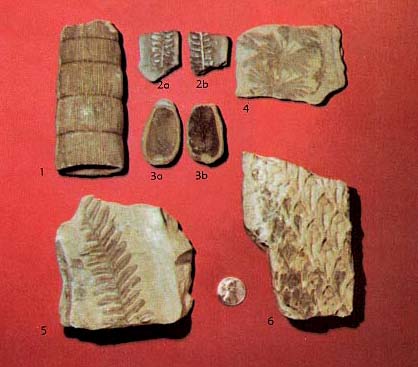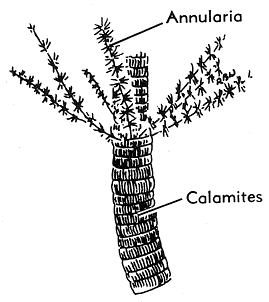
Ancient Life in Kansas Rocks, part 5 of 27
All of the specimens in this figure are Pennsylvanian plants. They grew in swampland forests which were populated not by the deciduous trees we know today, but by large, soft-tissued trees represented now by the small ground pines and scouring-rushes. Calamites (1 in the photograph) was a giant (to 30 feet high) scouring-rush or horsetail. From the horizontal joints in the stem (see drawing) grew a whorl of simple leaves of which Annularia (4) is an example. Plentiful also in the forests were huge-scale trees such as Lepidodendron (6). Their leaves left scars resembling scales. Some of these scale trees reached 100 feet in height and exceeded four feet in diameter.

Pecopteris (2a, b), Neuropteris (3a, b), and Alethopteris (5) were all Pennsylvanian ferns. Alethopteris, a seed fern, and Pecopteris, a true fern, differ from Neuropteris, another seed fern, in that the bases of the pinnules, the leaflike portions of the frond, are broadly attached to the stem, whereas in Neuropteris, the pinnules are constricted to a point at the bases. (All Upper Pennsylvanian, eastern Kansas)

Kansas Geological Survey
Placed online Feb. 1997
URL = "http://www.kgs.ku.edu/Publications/ancient/f05_plants.html"
Send comments and/or suggestions to webadmin@kgs.ku.edu